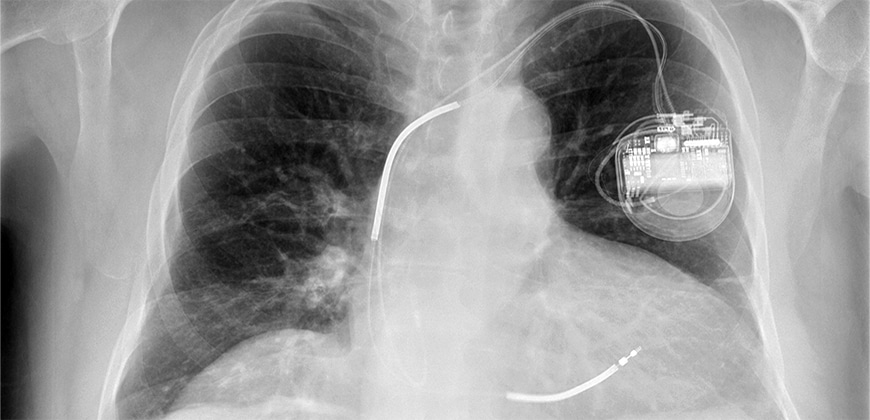Cell Phones Cause Electromagnetic Interference With Implantable Cardioverter Defibrillators
A study was performed to test the electromagnetic interference of cell phones with Implantable Cardioverter Defibrillators. Close to 4 million ICD’s have been implanted in the United States, and well over 3.25 million cell phones are in use in the U.S.
Implantable Cardioverter Defibrillators are life-saving medical devices implanted in patients who are at risk for sudden cardiac death from ventricular tachycardia and ventricular fibrillation. Once implanted, the ICD is able to perform defibrillation, cardioversion, and pacing of the heart. The device is capable and responsible for correcting cardiac arrhythmias that can be life-threatening.
The danger arises when an ICD mistakes electromagnetic interference from a cell phone (or other sources) as a cardiac complication and reacts by shocking the heart to return the rhythm to normal. This can be very dangerous, if not deadly, depending on what the patient is doing at the time of the unnecessary shock.
The three contributing factors of cell phones causing wireless electromagnetic interference with ICD’s are power output of the transmitting device, proximity, and radio wave frequency.
In regards to power output, the higher amount of power of the cell phone, the more potential it has for disruption. With newer models of cell phones, especially smartphones, the power output has increased as the capabilities of the phones rise.
Proximity is the most important factor when trying to avoid EMI to ICD’s from cell phones. The smaller the distance between the cell phone device and the ICD, the greater the chance of EMI. Keeping cell phones (and other possible sources of EMI) at a minimum distance of 6 inches from the ICD is recommended.
Certain radio wave frequencies can be more susceptible to interference, and the physical environment where the device is located can also affect the chances of EMI.
Simply put by the FDA, “EMI is a degradation of the performance of equipment or systems (such as medical devices) caused by an electromagnetic disturbance”.
A study conducted by a group of researchers was presented by Dr. Carsten Lennerz at the European Heart Rhythm Association (EHRA) Eurospace Cardiostim in Milan Italy, in June 2015. Out of 308 patients, 161 patients had Implantable Cardioverter Defibrillators. It was determined after analyzing results of electrocardiograms and interference reports (caused by smartphones), that interference would be an “uncommon” occurrence. The researchers continued to recommend patients keep a safe distance from cell phones (and other EMI sources). This is a chance not worth taking.
Article: “Amy Jones | HCTA”
Editor: “M. Danmole”
Image: “Beacon News”





